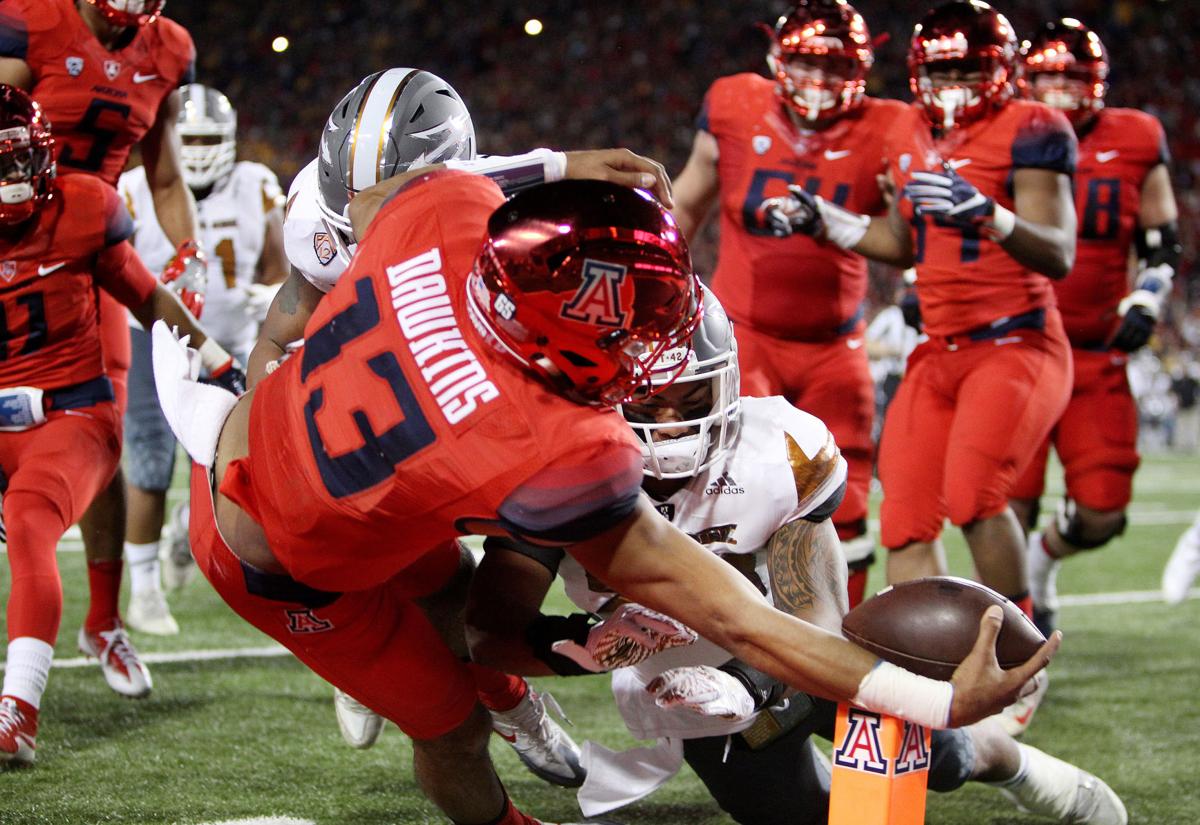Arizona is scheduled to begin spring practice Saturday. Like all teams at this time of year, there are a ton of unknowns about the Wildcats – questions that cannot be answered definitively with the start of the 2017 season almost seven months away.
But the questions must be asked, and answers must be attempted, in the wake of a 3-9 campaign, a turbulent recruiting cycle and a surprising number of coaching changes.
So over the course of this week, we’ll delve into five key issues as Arizona prepares to start spring drills.
Question No. 1: How much ground can Khalil Tate make up in his bid to surpass Brandon Dawkins and become the Wildcats’ starting quarterback?
UA coach Rich Rodriguez was not asked this question during his lone local media appearance of the offseason on Feb. 1. But using 2016 as a template, it’s not difficult to imagine how this will play out.
First, Rodriguez will declare the QB job an open competition between sophomore Tate and incumbent Dawkins. Next, Rodriguez will reveal that first-team reps in spring will be split evenly between them. Finally, Rodriguez will decline to name a starter when spring practice ends, extending the competition into training camp.
Given Dawkins’ inconsistency in his first season as a starter; Tate’s youth and considerable upside; and the need for upgraded quarterback play, pitting them against each other to extract the best from both is a wise course of action. It’s also a prime opportunity for Tate to show he has made major strides.
Although we saw him in a variety of roles last year – emergency reliever, first-time starter, mop-up guy – the truth is, we know little about Tate’s ability to play quarterback at a high level. He was thrust into an almost impossible situation – forced to play at age 17 because of injuries to Dawkins and Anu Solomon – and his performance predictably fell off after a promising start.
Tate viewed the entire experience as a positive one, something he could learn from and something that will help him in the long run. Spring practice represents the first chance for Tate to show what he has learned and how far he has come. He needs to command the huddle (such as it is) with greater confidence, display a greater mastery of the playbook and consistently complete passes that demand timing, touch and precision. If he can do all those things, Tate can put real pressure on Dawkins.
Dawkins isn’t lacking for confidence, and his talent is undeniable. He wasn’t just a good runner last season; he was a dominant one at times. Despite sharing snaps in several of his 10 appearances, Dawkins ranked fourth in the Pac-12 in rushing (94.4 yards per game). Everyone else in the top 12 was a running back.
But Dawkins did not progress as a passer. In his first three games, he completed 61.7 percent of his passes, averaging 7.72 yards per attempt with a 3-1 touchdown-to-interception ratio. In his final seven games, those figures fell to 47.5, 7.16 and 5-5. (Amazingly, Dawkins completed more passes – 50 – in his first three appearances than in his final seven – 48.)
So spring ball is critical for Dawkins too – not only to hold off Tate but to show he has improved as a player as well. The predominant practice format, in which the quarterbacks are seldom “live” runners, is conducive to that. Since the whistle blows upon, or even before, first contact, there’s less incentive to take off and run. The more prudent play is to find that second or third receiving option – precisely the area where Dawkins struggled the most last season.
Barring the addition of a graduate transfer (Malik Zaire?), either Dawkins or Tate will be Arizona’s starting quarterback next season. Starting Saturday, each has about 6½ months to state his case.





